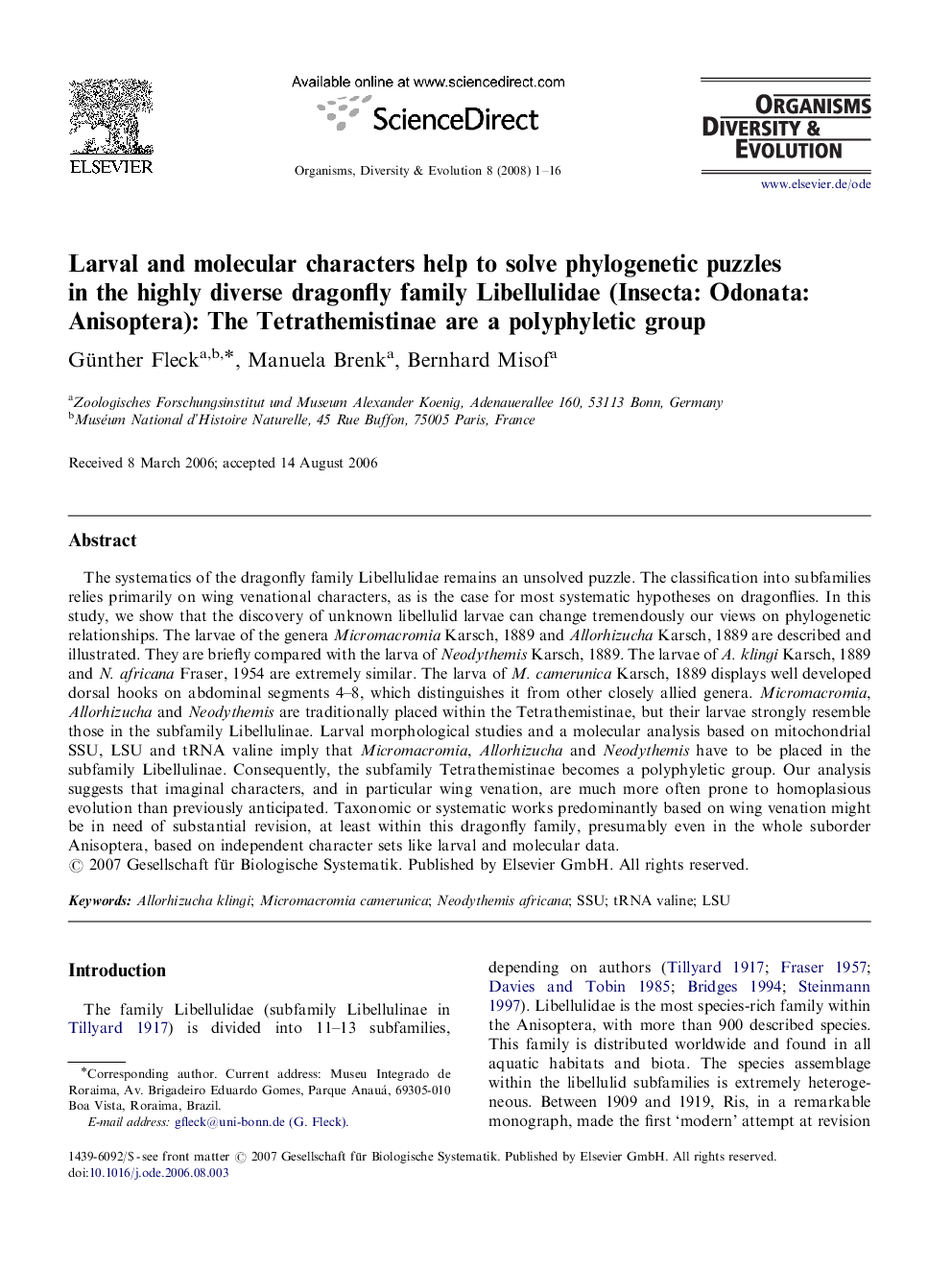| Article ID | Journal | Published Year | Pages | File Type |
|---|---|---|---|---|
| 4458686 | Organisms Diversity & Evolution | 2008 | 16 Pages |
The systematics of the dragonfly family Libellulidae remains an unsolved puzzle. The classification into subfamilies relies primarily on wing venational characters, as is the case for most systematic hypotheses on dragonflies. In this study, we show that the discovery of unknown libellulid larvae can change tremendously our views on phylogenetic relationships. The larvae of the genera Micromacromia Karsch, 1889 and Allorhizucha Karsch, 1889 are described and illustrated. They are briefly compared with the larva of Neodythemis Karsch, 1889. The larvae of A. klingi Karsch, 1889 and N. africana Fraser, 1954 are extremely similar. The larva of M. camerunica Karsch, 1889 displays well developed dorsal hooks on abdominal segments 4–8, which distinguishes it from other closely allied genera. Micromacromia, Allorhizucha and Neodythemis are traditionally placed within the Tetrathemistinae, but their larvae strongly resemble those in the subfamily Libellulinae. Larval morphological studies and a molecular analysis based on mitochondrial SSU, LSU and tRNA valine imply that Micromacromia, Allorhizucha and Neodythemis have to be placed in the subfamily Libellulinae. Consequently, the subfamily Tetrathemistinae becomes a polyphyletic group. Our analysis suggests that imaginal characters, and in particular wing venation, are much more often prone to homoplasious evolution than previously anticipated. Taxonomic or systematic works predominantly based on wing venation might be in need of substantial revision, at least within this dragonfly family, presumably even in the whole suborder Anisoptera, based on independent character sets like larval and molecular data.
